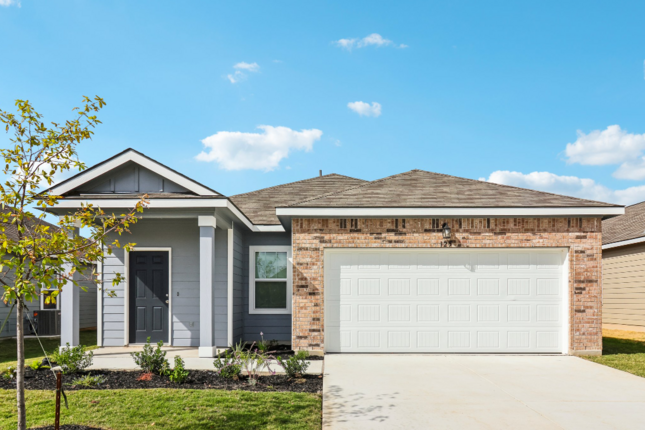Ah, the joys of moving. You’re pumped up about your new home, but first you have to get your stuff from A to B and set up a few things like power and internet. You might be a little busier than usual while you make it all happen, but it’ll totally be worth it when you’re loving your new appliances, open floor plan, big backyard and all the perks that come with living in a new Starlight home.
If you’ve moved before, you probably know the drill. But if you’re a first-time homebuyer this checklist should help you keep organized and sane while you close one chapter of your life and make your way into the next one.
- Hire Movers
It can be tempting to save money by moving yourself, but the stress and labor might be more hassle than it’s worth. Take it from all of the people who have moved themselves …. hiring movers is a great, wonderful, wise idea. A few tips: Look for locally owned movers in your area, read the reviews carefully and pay a little extra for a reputable company if you need to. You’ll thank yourself when your valuables arrive in one piece.
- Start Mail Forwarding
USPS recommends applying for mail forwarding two weeks in advance. This is important so you don’t miss an important bill (or a card from grandma with birthday money inside). There’s also a chance you might accidentally send online shopping deliveries to your old address if it’s saved in your account.
- Change Your Address
You’ve set up mail forwarding, but that doesn’t last forever (typically, it lasts 30 days). Next, it’s time to change your address so you can continue to get your mail. Bills, gifts, subscriptions (and more) all rely on this, otherwise the people living in your former rental might get all of your goodies when mail forwarding ends. You can change your address quickly online.
- Transfer Cable and WiFi Accounts
If you’re moving within the same city you can tell your service provider about your move and transfer your service. If you’re moving further away, remember to close your account and return your equipment so you don’t pay for more than what you need.
- Cancel Services & Subscriptions
You could have a variety of services to close or update. Think about gas, electric, meal delivery, or any other recurring subscriptions you may have. It’s probably best to do this right after you’ve moved into your new home so you keep the lights on in your old place while you’re still living there.
- Get Your Supplies
Start collecting boxes around the house or from neighbors — most old boxes can be repurposed. This can help you save money and it’s more environmentally friendly to reuse instead of buying new. New boxes, which you’ll likely need even if you repurposed some, can be purchased at home improvement stores like Home Depot or Lowes.
Other supplies you often need are bubble wrap for breakables like wine glasses, packing tape and a marker for labeling.
- Start Packing Early
Pacing yourself by starting early can help reduce last minute stress. Packing can often take longer than you’d think. Start with items that aren’t “needed” like books and decorations, and work your way up to the items you use daily like plates and silverware.
Make sure to label your boxes so you know where to find items when you’re unpacking, and so the movers know where to put boxes on move-in day.
- Update Your Driver’s License
You have 30 days to update your address on your driver’s license. Most states allow you to do this easily online with a small fee. Check your state (or the state you’re moving to) to get more information about their process sooner rather than later.
- Notify Your Employer
Send your HR department an email to let them know you’re moving. They’ll likely need to mail your W2 and other important information regarding health insurance, pay stubs and other benefits to your address. Be sure to check other accounts you have through work to make sure your contact info is up to date.
- Document the Condition of Your Rental
Landlords can withhold all or some of your deposit if they see damages. Take photos of the walls, carpets and flooring, appliances and cabinets in case you need to show proof that you did not leave behind anything they’d need to fix.
- Be Flexible
There’s nothing to do with this tip except adjust your expectations and learn to swerve. Remember to be kind to yourself and others throughout the moving process. For example: If you realize you’ve packed your frying pan and can’t make dinner — order takeout. Little shifts can help you stay calm through the chaos.
We saved the best for last: the final step is loving your new home. Owning is an investment in your future, so while you’re running around getting everything ready, keep reminding yourself that it’s all part of an exciting journey — with a world of new possibilities waiting to be unpacked.



